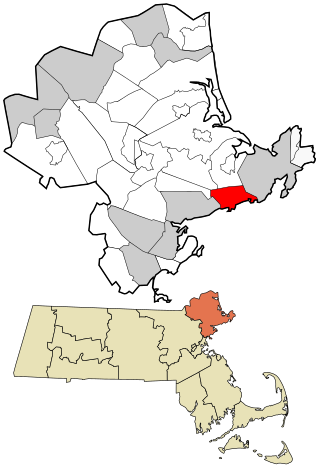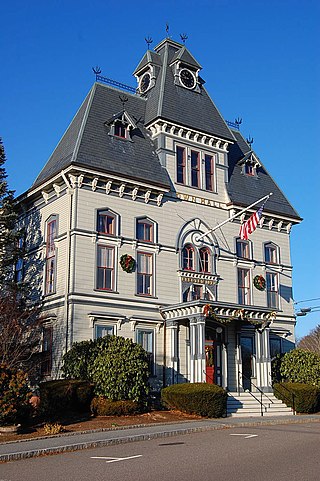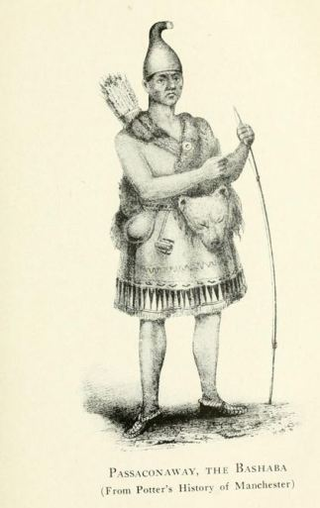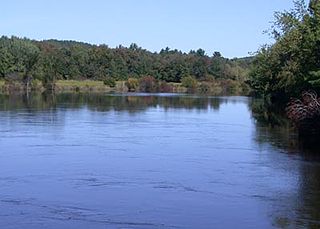
Manchester-by-the-Sea is a coastal town on Cape Ann, in Essex County, Massachusetts, United States. The town is known for scenic beaches and vista points. According to the 2020 population census, the population is 5,395.

Middleton is a town in Essex County, Massachusetts, United States. The population was 9,779 at the 2020 census.

Ipswich is a coastal town in Essex County, Massachusetts, United States. The population was 13,785 at the 2020 census. Home to Willowdale State Forest and Sandy Point State Reservation, Ipswich includes the southern part of Plum Island. A residential community with a vibrant tourism industry, the town is famous for its clams, celebrated annually at the Ipswich Chowderfest, and for Crane Beach, a barrier beach near the Crane estate. Ipswich was incorporated as a town in 1634.

Topsfield is a town in Essex County, Massachusetts, United States. The population was 6,569 at the 2020 census. Topsfield is located in the North Shore region of Massachusetts. Part of the town comprises the census-designated place of Topsfield.

King Philip's War was an armed conflict in 1675–1676 between a group of indigenous peoples of the Northeastern Woodlands against the English New England Colonies and their indigenous allies. The war is named for Metacom, the Pokanoket chief and sachem of the Wampanoag who adopted the English name Philip because of the friendly relations between his father Massasoit and the Plymouth Colony. The war continued in the most northern reaches of New England until the signing of the Treaty of Casco Bay on April 12, 1678.

The Massachusett language is an Algonquian language of the Algic language family that was formerly spoken by several peoples of eastern coastal and southeastern Massachusetts. In its revived form, it is spoken in four Wampanoag communities. The language is also known as Natick or Wôpanâak (Wampanoag), and historically as Pokanoket, Indian or Nonantum.

The Massachusett were a Native American tribe from the region in and around present-day Greater Boston in the Commonwealth of Massachusetts. The name comes from the Massachusett language term for "At the Great Hill," referring to the Blue Hills overlooking Boston Harbor from the south.

Passaconaway was a 17th century sachem and later bashaba of the Pennacook people in what is now southern New Hampshire in the United States, who was famous for his dealings with the Plimouth and Massachusetts Bay Colonies.
The Pennacook, also known by the names Penacook and Pennacock, were Algonquian indigenous people who lived in what is now Massachusetts, New Hampshire, and southern Maine. They were not a united tribe but a network of politically and culturally allied communities. Penacook was also the name of a specific Native village in what is now Concord, New Hampshire.

Sachems and sagamores are paramount chiefs among the Algonquians or other Native American tribes of northeastern North America, including the Iroquois. The two words are anglicizations of cognate terms from different Eastern Algonquian languages. Some sources indicate the sagamore was a lesser chief elected by a single band, while the sachem was the head or representative elected by a tribe or group of bands; others suggest the two terms were interchangeable. The positions are elective, not hereditary. Although not strictly hereditary the title of Sachem is often passed through the equivalent of tanistry.
The Pawtucket tribe were a confederation of Eastern Algonquian-speaking Native Americans in present-day northeastern Massachusetts and southeastern New Hampshire. They are mostly known in the historical record for their dealings with the early English colonists in the 17th century. Confusion exists about the proper endonym for this group who are variously referred to in European documents as Pawtucket, Pentucket, Naumkeag, Wamesit, or Mystic Indians, or by the name of their current sachem or sagamore.

The Nashaway were a tribe of Algonquian Indians inhabiting the upstream portions of the Nashua River valley in what is now the northern half of Worcester County, Massachusetts, mainly in the vicinity of Sterling, Lancaster and other towns near Mount Wachusett, as well as southern New Hampshire. The meaning of Nashaway is "between," an adverbial form derived from "nashau" meaning "someone is between/in the middle" = adverbial suffix "we" Gustafson, Holly (2000), "A Grammar of the Nipmuc Language," University of Manitoba.</ref>
Nanepashemet was a sachem and bashabe or great leader of the Pawtucket Confederation of Abenaki peoples in present-day New England before the landing of the Pilgrims. He was a leader of Native peoples over a large part of what is now coastal Northeastern Massachusetts.

Naumkeag is a historical tribe of Eastern Algonquian-speaking Native American people who lived in northeastern Massachusetts. They controlled most of the territory from the Charles River to the Merrimack River at the time of the Puritan migration to New England (1620–1640).
Masconomet, spelled many different ways in colonial deeds, was sagamore of the Agawam tribe among the Algonquian peoples during the time of the English colonization of the Americas. He is known for his quitclaim deed ceding all the tribal land, which extended from Cape Ann to the Merrimack River, as far inland as North Andover, Massachusetts and Middleton, Massachusetts, and as far to the southwest as the Danvers River, to John Winthrop the Younger, his heirs and all the settlers of eastern Essex County for a sum of 20 pounds, about 100 dollars.

Chickatawbut was the sachem, or leader, of a large group of indigenous people known as the Massachusett tribe in what is now eastern Massachusetts, United States, during the initial period of English settlement in the region in the early seventeenth century.
Montowampate (1609–1633), was the Sachem of the Naumkeag or Pawtucket in the area of present day Saugus, Massachusetts at the time of the Puritan Great Migration. The colonists called him Sagamore James. He was one of three sons of Nanepashemet, the sachem of the entire region occupied by tribes of the confederation.
The Massachusett dialects, as well as all the Southern New England Algonquian (SNEA) languages, could be dialects of a common SNEA language just as Danish, Swedish and Norwegian are mutually intelligible languages that essentially exist in a dialect continuum and three national standards. With the exception of Massachusett, which was adopted as the lingua franca of Christian Indian proselytes and survives in hundreds of manuscripts written by native speakers as well as several extensive missionary works and translations, most of the other SNEA languages are only known from fragmentary evidence, such as place names. Quinnipiac (Quiripey) is only attested in a rough translation of the Lord's Prayer and a bilingual catechism by the English missionary Abraham Pierson in 1658. Coweset is only attested in a handful of lexical items that bear clear dialectal variation after thorough linguistic review of Roger Williams' A Key into the Language of America and place names, but most of the languages are only known from local place names and passing mention of the Native peoples in local historical documents.
Massachusett Pidgin or Massachusett Jargon was a contact pidgin or auxiliary language derived from the Massachusett language attested in the earliest colonial records up until the mid-eighteenth century. Little is known about the language, but it shared a much simplified grammatical system, with many features similar to the better attested Delaware Jargon spoken in the nearby Hudson and Delaware watersheds. It was mutually intelligible with the other Southern New England Algonquian languages.

Massachusett Pidgin English was an English-based contact language that had developed in early seventeenth century New England and Long Island as a medium of communication between the Native speakers of Algonquian languages and the English settlers that began to settle the coastal areas in 1620s. The use of Massachusett Pidgin English co-existed in Massachusett-speaking communities with their original dialects as well as Massachusett Pidgin, another contact language that was Massachusett-based. Unlike Massachusett Pidgin, which was confused with the Massachusett language by the English colonists, attestations of Massachusett Pidgin English are quite numerous. As few of the colonists were able to or willing to master either Massachusett or its Pidgin variety, those that traded and lived directly next to Indian villages communicated in Massachusett Pidgin English. The use of Massachusett Pidgin English supplanted the use of Massachusett Pidgin and likely even overtook the native language in community. In a process likely to decreolization, the speakers of Massachusett Pidgin English began to adjust their language to the English of their neighbors, and since the nineteenth century, all the descendants of the Massachusett-speaking peoples have been monolingual English speakers.











